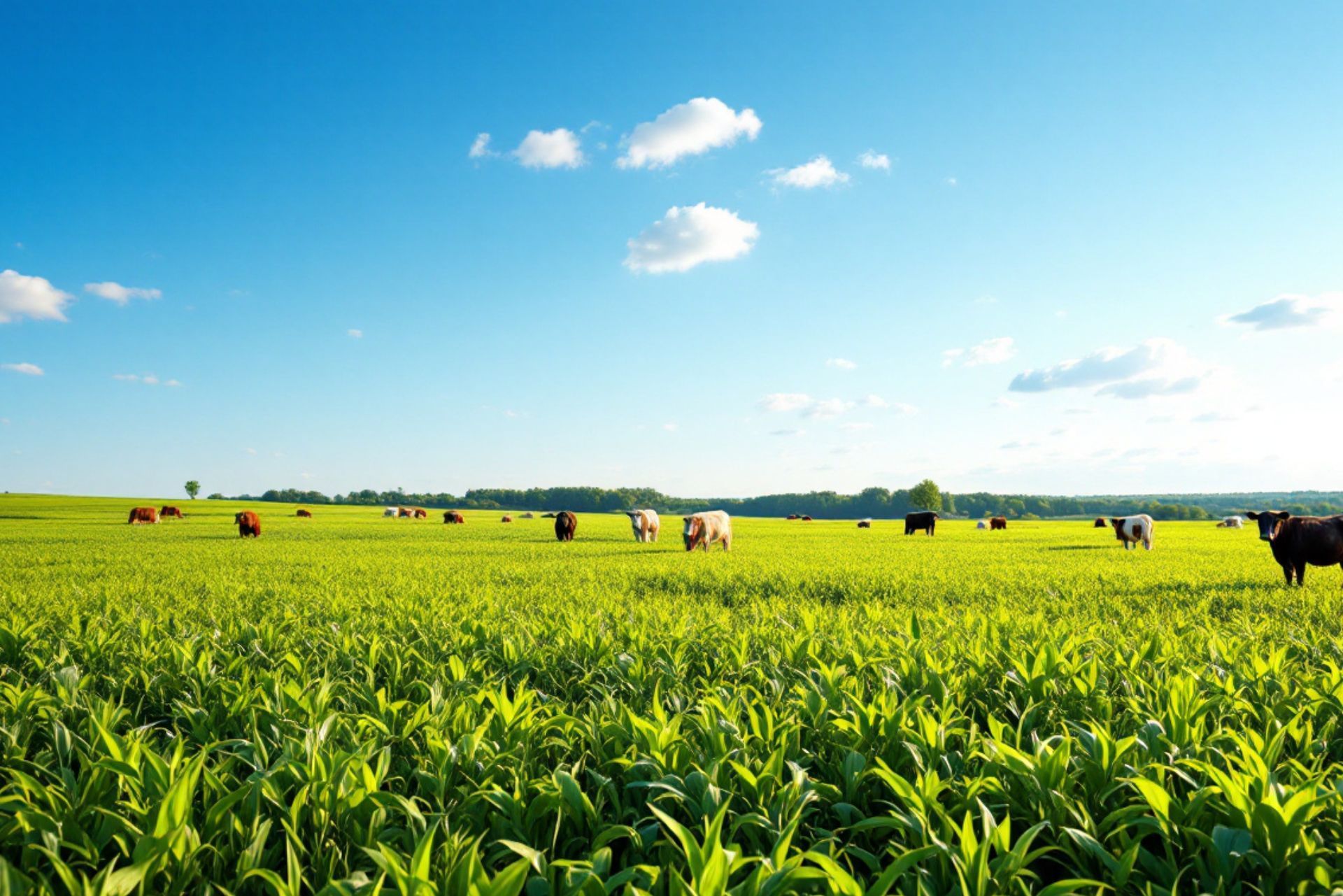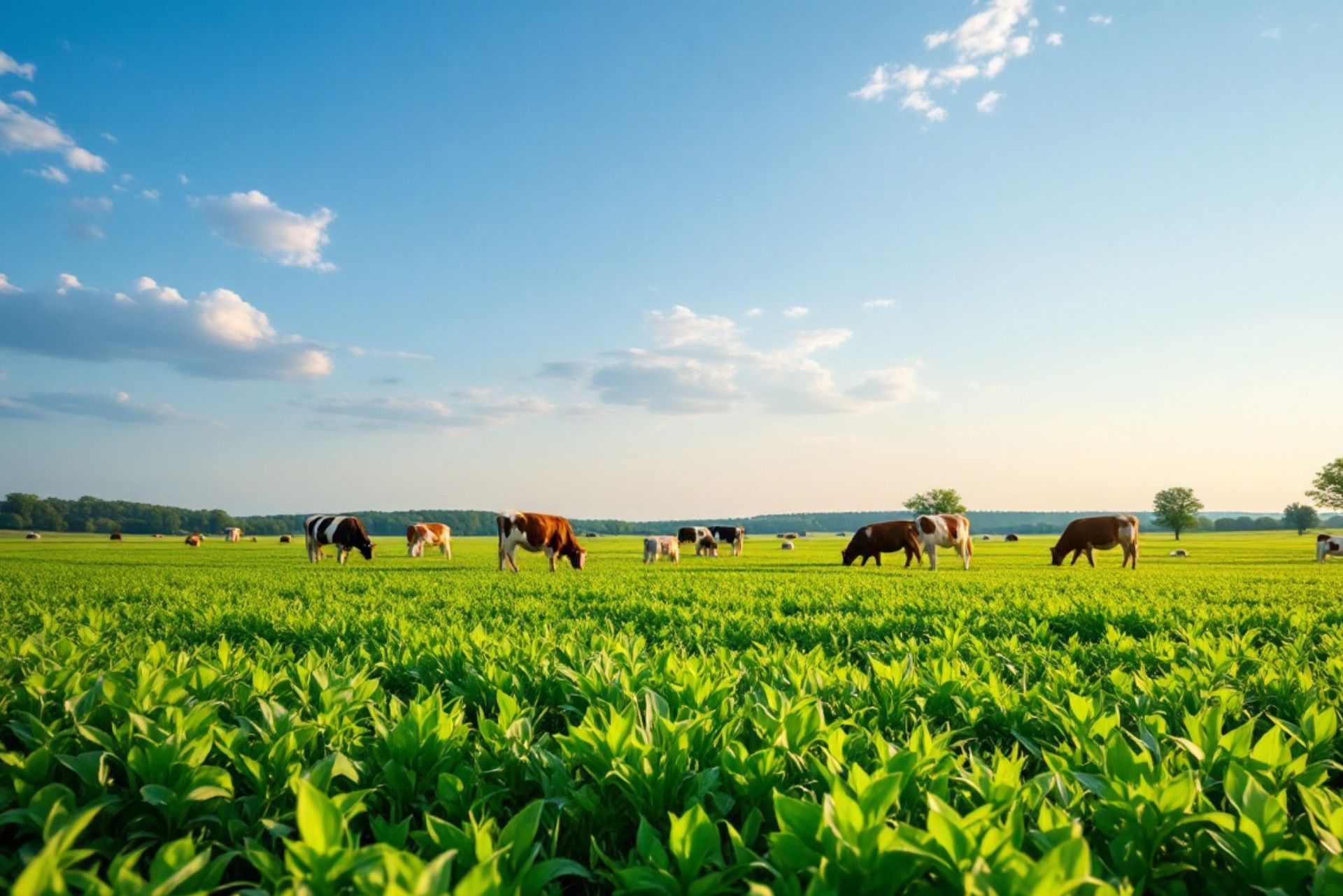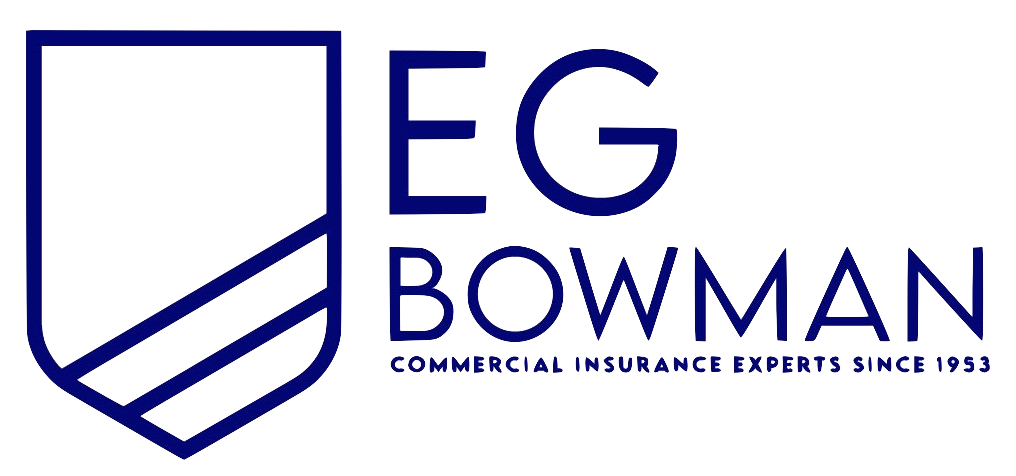New York Pasture, Rangeland, Forage Insurance
See How We're Different:
or Call Us: 212-425-8150

Most Common Business Policies
Index
Contact Us
In recent years, farmers in New York have faced numerous challenges, from unpredictable weather patterns to fluctuating market prices. One of the critical tools available to help mitigate these risks is Pasture, Rangeland, and Forage (PRF) Insurance. This article will delve into everything you need to know about PRF insurance in New York, guiding farmers through its benefits, functionalities, and the application process.
Understanding Pasture, Rangeland, Forage (PRF) Insurance
PRF insurance is designed specifically for ranchers and farmers who rely on pasture and forage production for their livestock. This insurance provides a safety net against the adverse effects of drought and other weather-related events that could impact forage growth.
The Basics of PRF Insurance
At its core, PRF insurance operates on the principle of insuring expected precipitation during a designated time frame. The coverage is based on a farmer’s Historical Production, which helps determine the appropriate coverage level. By annually selecting the coverage level and the specific intervals during which precipitation is assessed, farmers can tailor their insurance to meet their operational needs. This flexibility is particularly beneficial as it allows producers to adjust their policies based on changing climatic conditions and market demands, ensuring that their insurance remains relevant and effective.
Importance of PRF Insurance for Farmers
Farmers and ranchers who utilize PRF insurance can significantly reduce their financial risk. Given the crucial role of forage in cattle production, safeguarding this resource is vital for maintaining livestock health and profitability. PRF insurance not only helps stabilize income during adverse conditions but also promotes long-term sustainability in the agriculture sector. Additionally, the peace of mind that comes with having this insurance allows farmers to focus on other critical aspects of their operations, such as improving herd genetics or enhancing pasture management practices. By securing their forage production against unpredictable weather, farmers can invest more confidently in their future, knowing they have a financial buffer in place.
Moreover, PRF insurance is not just a reactive measure; it encourages proactive management strategies. Many farmers use the insights gained from their insurance assessments to implement better water conservation techniques and forage management practices. This can lead to improved soil health and increased resilience against future droughts. As climate variability becomes more pronounced, the role of PRF insurance in fostering adaptive agricultural practices will likely become even more crucial, ensuring that ranchers and farmers can thrive despite the challenges posed by a changing environment.

How PRF Insurance Works in New York
Understanding the mechanics of PRF insurance is essential for New York farmers looking to secure their livelihoods. The structure of the program can be complex, but it is vital to grasp its core elements.
Eligibility Criteria for PRF Insurance
To qualify for PRF insurance in New York, farmers must meet specific criteria. Generally, applicants must practice farming or ranching on a viable scale and produce forage for livestock, demonstrating a clear need for coverage. Additionally, having documented historical data on production and weather patterns will significantly support the application process. This documentation not only helps in establishing a farmer's eligibility but also plays a crucial role in determining the appropriate coverage levels. Farmers are encouraged to maintain meticulous records of their crop yields and any adverse weather conditions that may have affected their production in the past, as this information can be pivotal in the event of a claim.
Coverage Levels and Periods
Farmers can select various coverage levels ranging from 70% to 90% of their historical production. The choice of coverage percentage impacts the premiums paid and the compensation received in the event of a loss. Furthermore, coverage is available for specific intervals throughout the year, allowing farmers to align their insurance with local growing seasons. This flexibility is key to maximizing the benefits of PRF insurance. For instance, farmers can choose to insure their crops during the most critical growth periods, ensuring that they are financially protected against drought or excessive rainfall that could jeopardize their forage production. Additionally, understanding the nuances of the rainfall index used to calculate losses can empower farmers to make informed decisions about their coverage, potentially leading to better financial outcomes during challenging weather conditions.
The Cost of PRF Insurance in New York
The financial aspects of PRF insurance are critical for farmers who want to budget effectively. Understanding what influences the cost can help in strategizing for better coverage. With the unpredictable nature of weather patterns, particularly in New York, farmers must be proactive in managing their risk and ensuring they have adequate protection against potential losses.
Factors Influencing the Cost
The cost of PRF insurance is influenced by several factors, including geographical area, chosen coverage levels, and historical rainfall patterns. Counties with greater rainfall variations may see higher premiums. For instance, regions that experience extreme weather events, such as droughts or heavy rainfall, are likely to incur increased costs due to the higher risk associated with these conditions. Farmers should evaluate their specific situation and assess the risk when determining how much to invest in PRF insurance. Additionally, understanding local climate trends and soil conditions can provide insights into how these factors might affect forage production and, consequently, insurance costs.
Payment and Compensation Structure
Farmers can expect compensation based on the shortfall between their expected forage production and actual production, given the recorded precipitation levels. Typically, payments are made to cover losses above the farmer’s chosen coverage level, which adds a layer of financial security for ranchers facing adverse conditions. This compensation structure is particularly beneficial in years where rainfall is significantly below average, as it helps to mitigate the financial impact of reduced forage availability. Furthermore, farmers can also explore options for additional endorsements or riders that may enhance their coverage, providing even greater peace of mind during unpredictable weather cycles. Understanding the nuances of the payment structure can empower farmers to make informed decisions about their insurance needs and financial planning strategies.
How to Apply for PRF Insurance in New York
While PRF insurance presents many benefits, understanding the application process is crucial for successfully obtaining coverage.
Application Process and Timeline
The application process for PRF insurance begins with contacting a local insurance agent or the USDA’s Risk Management Agency. Farmers typically need to apply by specific deadlines each year, often in the late fall or early winter, to ensure coverage for the upcoming growing season. Early application is advisable to accommodate any potential adjustments or necessary documentation. It is also important to stay informed about any changes in policy or deadlines, as these can vary from year to year based on legislative updates or shifts in agricultural practices.
Additionally, farmers should consider attending informational workshops or webinars hosted by the USDA or local agricultural organizations. These sessions can provide valuable insights into the nuances of the PRF insurance program, including eligibility criteria, premium rates, and the implications of different coverage levels. Engaging with fellow farmers during these events can also foster a sense of community and shared experience, which can be beneficial when navigating the complexities of agricultural insurance.
Necessary Documentation for Application
When applying for PRF insurance, farmers are required to provide documentation, including historical production data, rainfall records, and operational details. This information not only verifies the need for coverage but also influences the amount of coverage offered. Being thorough and precise in your documentation will facilitate a smoother application process. It is advisable to maintain accurate records throughout the year, as this will not only assist in the application but also in any future claims or adjustments that may be necessary.
Moreover, farmers should be prepared to demonstrate their understanding of the specific risks they face in their region. This might include providing data on local weather patterns, soil conditions, and crop types. By presenting a comprehensive picture of their farming operations, applicants can better advocate for their coverage needs. Utilizing tools such as rainfall indices and climate data can further strengthen their application, showcasing a proactive approach to risk management in the face of unpredictable weather conditions that can significantly impact crop yields.
Common Misconceptions about PRF Insurance
Despite the clear advantages of PRF insurance, several misconceptions linger among farmers that can impact decision-making.
Debunking PRF Insurance Myths
One common myth is that PRF insurance is only for large-scale operations; however, this coverage is accessible to farmers of all sizes who utilize forage for their livestock. Additionally, some may believe that government subsidies make the insurance unattainable; rather, these subsidies help make it more affordable. In fact, many small and medium-sized farms have successfully leveraged PRF insurance to safeguard their operations against weather-related risks, ensuring their financial stability during adverse conditions. By participating in this program, farmers can also gain access to valuable resources and support networks that enhance their overall resilience.
Understanding the Fine Print
Another significant misconception revolves around the fine print of the insurance policies. Policies can have specific exclusions and terms that are often misunderstood. Farmers should take the time to carefully read and understand their insurance contracts to avoid unexpected surprises when filing for claims. Moreover, engaging with insurance agents who specialize in agricultural policies can provide clarity on complex terms and conditions. These professionals can help farmers navigate the intricacies of their coverage, ensuring they are fully aware of what is included and excluded, as well as any deadlines for filing claims. This proactive approach can significantly reduce the risk of misunderstandings and enhance the effectiveness of their insurance coverage.

The Role of PRF Insurance in Risk Management
Effective risk management is fundamental for any agribusiness, and PRF insurance plays an instrumental role in this process.
Mitigating Financial Risks with PRF Insurance
By holding PRF insurance, farmers can cushion the financial blow from unforeseen weather events. This mitigation of risk empowers farmers to invest confidently in their operations, knowing they have a safety net to rely on during difficult times. For instance, when drought conditions strike, farmers can rest assured that their PRF insurance will provide them with compensation based on the rainfall index, allowing them to cover essential expenses such as seeds, equipment maintenance, and labor costs. This financial support can be pivotal in maintaining the continuity of their farming operations and ensuring that they can rebound quickly once conditions improve.
PRF Insurance as a Safety Net for Farmers
PRF insurance serves as a crucial safety net, particularly for those working in regions prone to extreme weather conditions. With rising climate uncertainty becoming the norm, it's more important than ever for farmers to consider PRF insurance as an integral part of their risk management strategy. The insurance not only protects against the immediate impacts of adverse weather but also encourages sustainable farming practices. By providing a financial buffer, farmers can explore innovative agricultural techniques and invest in technology that enhances resilience against climate variability. Furthermore, as more farmers adopt PRF insurance, it fosters a collective approach to risk management within the agricultural community, enabling knowledge sharing and collaboration to tackle the challenges posed by climate change more effectively.
Future of PRF Insurance in New York
As the agriculture landscape continues to evolve, so too will the dynamics of PRF insurance in New York.
Potential Changes and Developments
In the coming years, farmers may witness shifts in policy structures and coverage options in response to climatic adaptations. The USDA is consistently working to update and improve programs, which may bring more tailored options to meet the specific needs of New York farmers. This could include enhanced data analytics tools that help farmers assess their risk more accurately, allowing for more precise coverage selections. Additionally, there may be an increased emphasis on educational programs aimed at informing farmers about the latest developments in PRF insurance, ensuring they are well-equipped to make decisions that align with their operational goals.
Impact of Climate Change on PRF Insurance
Climate change poses unique challenges that will affect forage production and insurance needs. Farmers will need to navigate these challenges wisely, making informed choices regarding coverage levels and periods. PRF insurance will likely adapt alongside these evolving challenges, aiming to provide comprehensive support to farmers in uncertain times. For instance, as weather patterns become more unpredictable, the insurance policies may evolve to include more flexible options that allow farmers to adjust their coverage based on real-time data. This adaptability could be crucial for maintaining the viability of forage crops, which are essential for livestock health and productivity.
Moreover, the integration of technology into agriculture, such as precision farming and remote sensing, could play a significant role in shaping the future of PRF insurance. By leveraging these advancements, farmers can gather critical data on soil health, moisture levels, and crop performance, which can be instrumental in determining the
appropriate insurance coverage. As a result, PRF insurance may not only serve as a safety net but also encourage proactive management practices that enhance resilience against the impacts of climate variability. This holistic approach to risk management will be essential for sustaining the agricultural economy in New York, particularly as farmers face increasing pressures from both environmental and market forces.
